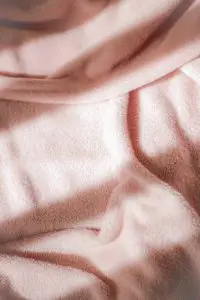The textile and clothing industry is one of the most popular industries globally, and it has evolved. Many would agree that textile production evolution is one of the most interesting to study. You can trace textile production back to prehistoric times as there are studies that human beings started wearing clothes between 500,000 and 100,000 years ago. Since then, the textile industry has continually evolved. There are records of trade hubs of textile found in Ancient India, China, and Turkey. All these regions are available on the Silk Road. This article walks you through textile production and its evolution into the modern textile industry.
Step-by-Step Process of Textile Production
Just like food and shelter, clothing has always been quite crucial for the survival of human beings. When Neolithic cultures discovered the advantage of woven fibers over animal hides, textile production emerged as one of the technologies critical to humans. From the first hand-held spindle and handloom to automated spinning machines and power looms, the principles of textile production have been constant over the centuries. Plants are usually cultivated, harvested, cleaned, and aligned; they are spun into yarns. Manufacturers then interweave these yarns to create clothes. Today, manufacturers spin synthetic fibres. However, you still weave them using the same process as flax and cotton. Follow the step-by-step process below for a better understanding of the process.
Picking
Once you pick the fibre you would like to harvest, the next step in textile production is usually picking. Picking helps to remove foreign elements like seeds, dirt, leaves, and insect from the fibre. The early pickers would usually beat the fibre to be able to loosen them and then remove the debris by hand. However, with the quick evolution of the textile industry, machines started using rotating teeth to do the job. This helped produce a thin lap that got the fibre ready for carding.
Carding
The next step in textile production is carding, which involves combing the fibres to align and join them in a rope referred to as silver. In Ancient days, hand carders worked by pulling the fibres between wire teeth constructed on boards. Due to the evolution of the textile industry, inventors developed the machine to perform the same job using rotating cylinders. Afterwards, the silvers were combined, twisted, and drawn into ‘roving.’
Spinning
Once the carding process was complete and there were silvers and roving, the spinning process helped twist and draw out the roving. Producers then wounded the resulting yarn on a bobbin. Finally, the spinning wheel operator would draw out the cotton by hand using rollers, also known as spinning mules and throstles.
Warping
The warping steps are next in the process of textile production. First, it required gathering the yarns from the bobbins and putting them together on a spool or reel. Next, you could transfer it to a warp beam and mount it on a loom. Warp threads usually ran lengthwise on a loom.
Weaving
This is the final stage when making cloth and textile. Therefore, manufacturers would interweave the crosswise woof threads with warp threads on a loom. The power loom was quite similar to the power loom in many ways. The difference was that it was mechanized and much faster than the previous option.
The Evolution of the Textile Industry
From the animal-skin-wearing pharaohs of Egypt to the silk-wearing people of the Byzantine Empire, fashion trends have always impacted textile production. Merchants have always focused on producing the most in-demand fabrics; factories also concentrate on making in-demand products. Two driving forces of textile production have always been the cost of products and consumer taste. Therefore, the main driving force of success when diving into textile production is the ability to operate effectively and secure contracts with clothing marketers.
Textile Production: The Silk Road
The textile industry has been shaping international trades and trends for many years. Ancient Chinese silk was one of the catalysts for creating the first international commercial highway globally in textile production history. The Silk Road was simply an old network of trade roads; it ran from China to India and Central Asia. This road connected the Romans and the Chinese over the years.
People started establishing the main routes around 100 to 200 BCE when silk was still in high demand in the Roman Empire. Silk was more comfortable than the traditional woolen Roman clothing and was a symbol of status and luxury. However, supply was scarce due to the low production of the textile. Therefore, it was pretty expensive and reserved for wealthy aristocrats and government officials. The lack of supply was because the Chinese kept silk textile production a secret. Till 300 AD, China held the monopoly on silk textile production, and Chinese weavers were forbidden from sharing the secret with outsiders.
The Silk Road changed things significantly and was the first international, geopolitical and economic relationship. Although silk, gems, and spices are why Silk Road existed, it soon became a route for other trades and had a lasting effect on the textile industry. In addition, it was the first connection between the Asian and Western cultures and led to the spread of their ideas, philosophies, and religions.
People also believe the Silk Road facilitated the spread of the Black Plague, which killed millions of Europeans. Although the Silk Road operated years ago, it has had a lasting effect on historical and modern international business. The demand for Chinese silk by the Romans laid the foundation for the economic and political environment in many ways.
The Evolution of Textile Production During the Industrial Revolution
The Industrial revolution dates back to the 1700s and started in England. At this time, England was a colonial power utilizing its colonies in Asia and America to provide resources like gold, silk, cotton, tobacco, and sugar. It also provided its colonies with finished products like metalware and textiles. With the increase in population, Britain had to find new ways to keep up demand for products. The value for their business-led Britain to produce more goods and ships. Its ports and population also made it the ideal choice for industrialization. Britain mostly controlled the international trade scene, with most global trades held in Europe.
However, by the 1790s, most British exports moved to North America and the West Indies. Before the Industrial Revolution, textiles were made by hand in the Cottage industry. People would bring materials to homes and pick them up when they finished fabrics. This allowed workers to only work on their schedules, and there was a massive problem of unproductivity. Since Britain was the leading supplier of textiles, there was a need for new ways of meeting demands. That was when technological innovations like the spinning jenny, water frame, and the steam engine came into the picture. It improved the quality of threads and increased textile production speed. When Samuel Slater brought British technology to the United States, the textile industry began to expand.
In addition, there were technological innovations like Eli Whitney’s cotton gin in the US, which helped to further textile production in the US. Cotton gin worked faster than previous mechanical advancements. In addition, it separated the cotton from the seed, quickly reducing production time to just 12. This helped the United States to produce fifty times more cotton than Britain and in fewer hours.
Textile Production – Its Evolution into the Modern Textile Industry
Textile production moved to a new level with the development of technology and techniques to hasten the production process. The invention of semi-automatic spinning wheels and the power loom shaped the textile industry as we know it. When a British inventor introduced steam energy, it led to higher productivity and agility in the industry and improved textile production. Over the years, more technological advancements occurred, shaping the textile and fashion industry.
The discovery of electrical energy in the second wave of the industrial revolution led to the creation of many technological innovations like synthetic fibers. It also gave way to new fabric cutting and dyeing technologies, giving fashion designers more room to be innovative. This led to the foundation of fashion as we know it today.
The Digital Revolution of Fashion
The 20th century birthed the idea of mass production in the modern textile industry. Although it started with the idea of creating military uniforms, it spread to the industry afterward. All these innovations accelerated the automation of the textile and fashion industry. The invention of the computer and robotics marked the beginning of the 3rd industrial revolution. Technologies like laser cutting, 3D printing, and many more allowed many textile production processes to be automated. Additionally, Inventors transformed the design process by adopting computers and robots.
The adoption of digital technology is redefining processes from textile production to the supply and distribution of textiles. By streamlining textile production and designs, companies can work more precisely to lower manufacturing costs and shorten the production cycle. The integration of digital technology drives a dramatic shift in corporate culture, leading people to challenge the status quo constantly. It has made manufacturers rethink their relationship with consumers and reshaped the textile industry. Technological advancement is leading the way to sustainable production methods.
Final Thoughts
The production of textiles is one of the oldest activities of humans. Despite several technological advances in the textile industry, the creation of natural materials still depends on converting fiber to yarn and finally to fabrics. Knowledge and technology are two pillars continually shaping the textile industry. Through the four industrial revolutions, textile production has become one of the leading industries in the world. The development of technologies has scaled the production of textile over the years. These technological advancements symbolize the evolution of textile production into the modern textile industry.







